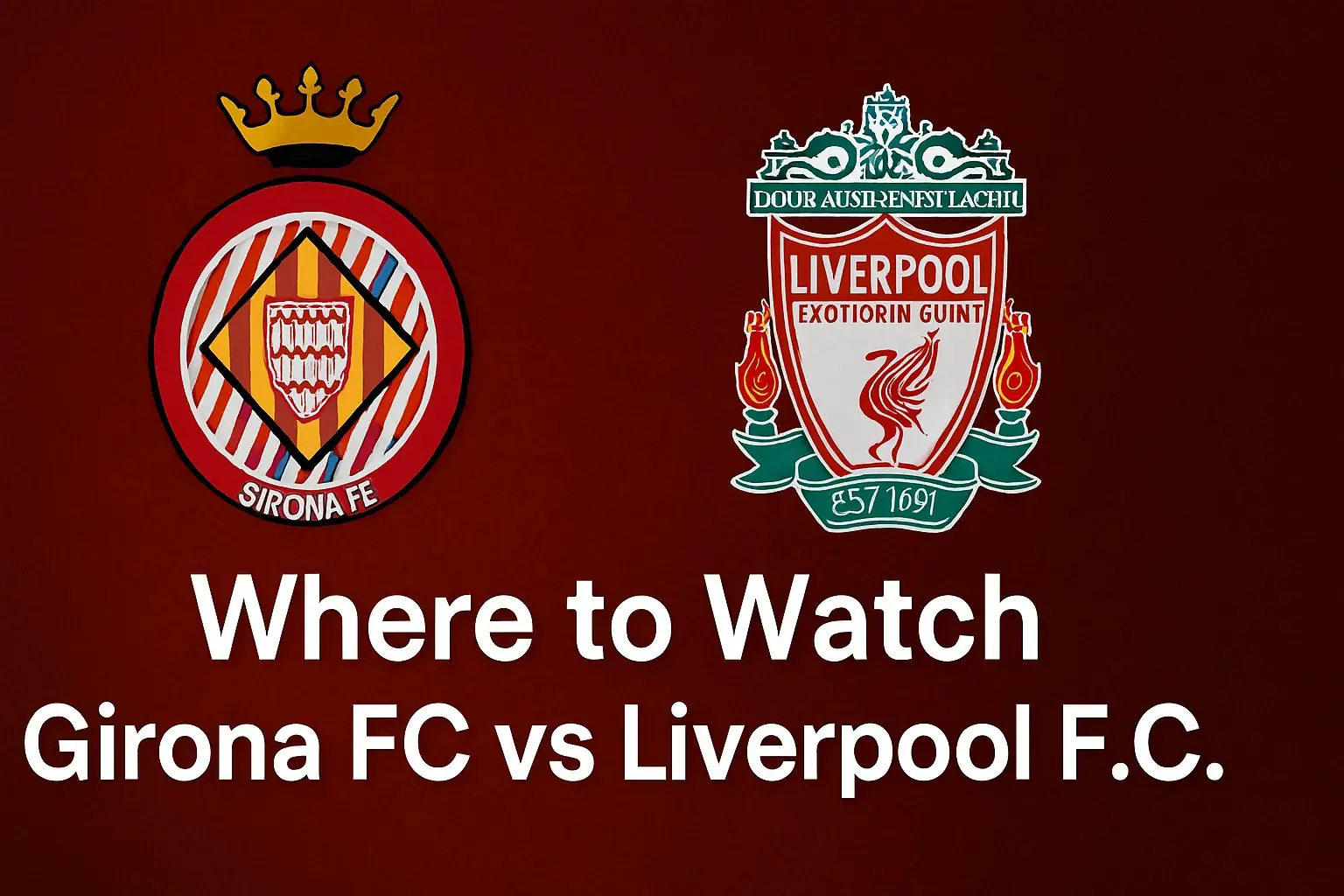-
Posted on: 02 Jul 2024

-
Discover how to access basic television channels without an internet connection in 2025. This guide explores over-the-air (OTA) antenna reception, satellite options, and alternative methods to enjoy free or low-cost broadcasting, ensuring you stay informed and entertained even without broadband.
Understanding Your Options: TV Without Internet in 2025
In an era where high-speed internet is often synonymous with modern living, it's easy to assume that television viewing is exclusively tied to online streaming services. However, this couldn't be further from the truth. For many, the need or desire to access basic television channels without an internet connection remains a significant consideration. Whether it's due to unreliable broadband availability, cost-saving measures, or a preference for traditional broadcasting, there are robust and accessible solutions available in 2025. This article delves into the various methods you can employ to enjoy your favorite local news, sports, and entertainment programming without relying on an internet subscription. We will explore the most popular and effective techniques, from the resurgence of over-the-air (OTA) antennas to the enduring presence of satellite television, and even some less conventional but viable alternatives. By the end of this comprehensive guide, you'll have a clear understanding of how to tune into essential channels, making informed decisions based on your specific needs and geographical location.
The landscape of television consumption has evolved dramatically over the past decade. While streaming giants like Netflix, Hulu, and Disney+ have captured a significant market share, the fundamental broadcast infrastructure that has served households for generations is still very much alive and well. In 2025, these traditional methods offer a compelling alternative, often providing a more stable and cost-effective way to access a core set of channels. For instance, the Digital TV Transition, completed in many countries years ago, paved the way for clearer, more efficient over-the-air broadcasts. This transition means that modern televisions and antennas are designed to pick up these digital signals with greater ease and fidelity than the analog signals of the past. Understanding this foundational shift is crucial when exploring your options for internet-free television.
Furthermore, the economic climate of 2025 continues to drive consumers towards solutions that offer value without recurring monthly fees. Internet service, particularly high-speed broadband, can be a substantial expense. By opting for methods that bypass internet requirements, individuals and families can significantly reduce their monthly entertainment budgets. This article aims to demystify these options, providing actionable advice and insights into the technology and setup involved, ensuring that everyone can enjoy television content, regardless of their internet connectivity status.
The Power of Over-the-Air (OTA) Antennas
The most direct and often the most cost-effective way to receive basic television channels without an internet connection is through an Over-the-Air (OTA) antenna. This technology leverages broadcast towers that transmit television signals through the airwaves, much like radio waves. These signals are free to receive, meaning once you have the necessary equipment, there are no monthly subscription fees associated with watching the channels they carry. In 2025, OTA broadcasting is primarily digital, offering superior picture and sound quality compared to the old analog systems. These digital signals are robust and can be received by any modern television equipped with a digital tuner, or by an older analog TV using a digital converter box.
How OTA Antennas Work
OTA antennas are designed to capture radio frequency (RF) waves emitted by local television stations. These stations broadcast on specific frequencies, and the antenna acts as a collector for these signals. The strength and clarity of the signal received depend on several factors, including the distance to the broadcast tower, the type and quality of the antenna, any obstructions in the signal path (like buildings or hills), and atmospheric conditions. Once the antenna captures these signals, they are sent via a coaxial cable to your television's tuner. The tuner then decodes these digital signals into the picture and sound you see and hear on your screen.
Types of OTA Antennas
There's a wide variety of OTA antennas available, catering to different needs and reception environments. They generally fall into a few main categories:
- Indoor Antennas: These are typically smaller, more discreet, and designed for placement on a TV stand, shelf, or window. They are best suited for areas close to broadcast towers. Many modern indoor antennas are flat, flexible, or loop-shaped and can be quite effective.
- Outdoor Antennas: Generally larger and more robust, outdoor antennas are mounted on the roof, side of a house, or in an attic. They offer superior signal reception due to their higher placement and often more sophisticated design, making them ideal for longer distances from broadcast towers or in areas with more signal interference.
- Directional vs. Omni-directional Antennas: Directional antennas are designed to receive signals from a specific direction and are best if you know the location of the broadcast towers. Omni-directional antennas pick up signals from all directions, which can be useful if towers are scattered or their locations are unknown, though they may sometimes pick up more interference.
The choice of antenna is critical for successful OTA reception. A high-quality antenna, correctly positioned, can unlock a wealth of free broadcast content.
What Channels Can You Get?
The specific channels available via OTA reception are determined by the local television stations broadcasting in your area. In most developed countries, these include the major networks (like ABC, CBS, NBC, FOX in the US), public broadcasting channels (like PBS), and often a variety of smaller, independent, or specialized channels. These can range from news and weather channels to educational programming, international content, and retro movie channels. The number and type of channels can vary significantly by location. For example, a user in a major metropolitan area will likely have access to more stations than someone in a rural region.
To determine which channels are available in your specific location, you can use online tools such as the FCC's DTV Reception Maps (for the US) or similar resources provided by broadcast regulators in other countries. These tools allow you to input your address and see a prediction of the signal strength and available channels from nearby towers.
Current Trends in OTA Reception (2025)
The world of Over-the-Air (OTA) television is far from static, and 2025 sees several key trends shaping how consumers access broadcast content without internet. One of the most significant ongoing developments is the continued expansion and refinement of digital broadcasting standards. While the transition to digital is complete in many regions, broadcasters are continually optimizing their signals for better efficiency and quality. This includes advancements in compression technologies that allow for more channels to be broadcast within the same spectrum, potentially leading to a greater variety of niche content becoming available OTA.
Another prominent trend is the innovation in antenna technology. Manufacturers are producing increasingly sophisticated and user-friendly antennas. We're seeing a rise in smart antennas that can automatically adjust their direction or amplification based on signal conditions. Additionally, the aesthetic integration of antennas into home decor is improving, with many indoor models designed to be virtually invisible or even disguised as decorative items. The market for compact, powerful, and aesthetically pleasing antennas is booming in 2025, catering to a growing audience seeking to cut the cord from traditional cable and internet packages.
Furthermore, the data and tools available to consumers have become much more sophisticated. Online reception maps, like those provided by regulatory bodies, are more accurate than ever, often incorporating detailed terrain data and real-time signal propagation models. Many antenna manufacturers also offer their own apps or online tools that help users identify the best antenna type and placement for their specific location. This increased accessibility to information empowers consumers to make more informed decisions, reducing the guesswork involved in setting up an OTA system.
The regulatory environment also plays a role. In some countries, governments are actively promoting OTA broadcasting as a vital public service, ensuring universal access to emergency information and diverse programming. This can translate into investments in broadcast infrastructure and policies that support the availability of free over-the-air channels. Statistics from 2024 indicate a steady, albeit slow, increase in households relying on OTA as their primary or secondary means of television reception, a trend projected to continue into 2025, driven by economic factors and a desire for simpler, more resilient entertainment solutions.
Finally, the integration of OTA with other technologies is becoming more common. While the core premise is internet-free reception, some modern smart TVs and streaming devices offer hybrid solutions. For example, a TV might allow you to scan for OTA channels and then integrate them into its channel guide alongside streaming apps. This blending of traditional broadcast and digital content, even for those without constant internet, provides a more unified viewing experience. However, for the strict definition of "without internet," the focus remains on the antenna and the TV's tuner.
Step-by-Step Guide to Setting Up an OTA Antenna
Setting up an Over-the-Air (OTA) antenna system is a straightforward process that can unlock a world of free television. By following these steps, you can be watching your favorite channels in no time, without needing an internet connection.
Step 1: Determine Your Location's Broadcast Availability
Before purchasing any equipment, it's crucial to understand what channels are available to you. Use online tools like the FCC DTV Reception Maps (US) or similar national broadcast authority websites. Enter your full address to see a map indicating the direction and distance to broadcast towers and a list of predicted receivable channels, along with their signal strength. This will guide your antenna choice and placement.
Step 2: Choose the Right Antenna
Based on the reception map, select an antenna that suits your needs:
- Close to towers (within 25 miles): A small, amplified indoor antenna might suffice.
- Moderate distance (25-50 miles): A larger indoor antenna or a basic outdoor antenna is recommended. Look for antennas with higher gain ratings.
- Far from towers (over 50 miles) or in challenging terrain: A powerful outdoor antenna, potentially a multi-directional or Yagi-style antenna, mounted high on your roof, will be necessary.
Consider whether you need an amplified (powered) antenna, which can boost weaker signals, but also potentially overload if signals are already strong. Ensure the antenna is rated for the UHF and VHF frequencies used by local broadcasters.
Step 3: Gather Your Equipment
You will need:
- Your chosen OTA antenna.
- A coaxial cable (RG6 is standard) of sufficient length to reach from the antenna to your TV.
- If using an amplified antenna, its power adapter and an electrical outlet.
- Mounting hardware if installing an outdoor antenna (e.g., mast, brackets, screws).
- A television with a built-in digital tuner (most TVs manufactured after 2007). If you have an older analog TV, you'll need a digital converter box.
Step 4: Install the Antenna
For indoor antennas: Place the antenna near a window or on an exterior wall, facing the direction of the broadcast towers identified in Step 1. Experiment with different locations and orientations (horizontal/vertical) to find the best signal. Some antennas come with adhesive strips or suction cups for window mounting.
For outdoor antennas: Mount the antenna securely on your roof, fascia, or a mast. Higher is generally better. Ensure it's pointed towards the primary broadcast towers. Run the coaxial cable neatly down the side of your house, securing it with cable clips. Use a weather-resistant entry point into your home (e.g., a dedicated cable pass-through or a slightly opened window).
Step 5: Connect to Your TV
Connect one end of the coaxial cable to the antenna's output port and the other end to the "Antenna In" or "RF In" port on your television or digital converter box. If using an amplified antenna, connect its power adapter to the antenna and plug it into an electrical outlet.
Step 6: Scan for Channels
Turn on your TV. Navigate to the TV's menu and find the channel setup or scan option. Select "Antenna" or "Air" as the signal source (not "Cable"). Initiate an automatic channel scan or auto-tune. Your TV will search for all receivable digital broadcast signals. This process can take several minutes. Once complete, your TV will display a list of all found channels.
Step 7: Fine-Tune and Troubleshoot
If the channel reception is poor or some channels are missing, try repositioning the antenna slightly. Even minor adjustments can make a significant difference. Re-run the channel scan after making adjustments. Refer to the troubleshooting section for more detailed advice.
With these steps, you'll be enjoying free, high-definition broadcast television without any internet dependency.
Satellite TV: A Viable Alternative?
While Over-the-Air (OTA) antennas are the primary method for receiving free basic channels without internet, satellite television presents another significant option, particularly for those who want a wider variety of channels than what OTA can offer, or who live in areas with poor OTA reception. Satellite TV systems use a satellite dish installed at your home to receive signals beamed from orbiting satellites, which then relay programming from various broadcast networks and premium channels.
How Satellite TV Works
In a satellite TV system, programming providers transmit signals to geostationary satellites. These satellites then bounce the signals back down to Earth, where a satellite dish at your residence captures them. The dish is connected via coaxial cable to a satellite receiver (set-top box), which decodes the signals and sends them to your television. Unlike OTA, which primarily offers local broadcast channels, satellite packages can include a vast array of national and international channels, including sports, movies, news, and general entertainment, often bundled into different subscription tiers.
Key Providers and Packages
Major satellite TV providers, such as Dish Network and DirecTV in the United States, offer various packages. These packages range from basic "starter" or "essentials" tiers that include major networks and popular cable channels, to more comprehensive bundles with hundreds of channels. Many providers also offer international channel packages. In 2025, these providers are increasingly competing with streaming services, leading to more flexible package options and promotional deals.
Advantages of Satellite TV
- Wider Channel Selection: Satellite packages typically offer a far greater variety of channels than OTA reception, including many cable networks that are not broadcast over the air.
- Consistent Reception in Many Areas: Satellite signals are less affected by local terrain or dense urban environments compared to OTA signals. As long as the dish has a clear view of the southern sky (in the Northern Hemisphere), reception can be stable.
- National and International Channels: Access to channels not available locally through OTA broadcasts.
Disadvantages of Satellite TV
- Monthly Subscription Fees: Unlike OTA, satellite TV requires a recurring monthly payment, which can be substantial depending on the package chosen.
- Equipment Costs and Installation: While providers often offer free installation, there can be upfront equipment costs or lease fees. The satellite dish needs clear, unobstructed access to the sky.
- Weather Interference: Severe weather, such as heavy rain, snow, or thunderstorms, can temporarily disrupt satellite signals, leading to pixelation or signal loss.
- Contract Requirements: Many satellite providers require customers to sign long-term contracts (e.g., 1-2 years), with penalties for early termination.
For those who absolutely cannot get reliable OTA reception but still want a broad selection of channels without relying on internet streaming, satellite TV remains a strong contender in 2025. However, it's essential to weigh the monthly costs and contract commitments against the benefits.
Best Practices for Maximizing Reception
Whether you're using an Over-the-Air (OTA) antenna or a satellite dish, optimizing signal reception is key to enjoying clear, uninterrupted television. In 2025, with advancements in technology, achieving excellent reception is more attainable than ever. Here are some best practices to ensure you get the best possible signal.
For OTA Antennas:
- Strategic Placement is Paramount: As mentioned, height and line-of-sight are crucial. For indoor antennas, try placing them in upper-story windows or near exterior walls. For outdoor antennas, mount them as high as possible, ideally on the roof, away from obstructions like trees or other buildings.
- Direction Matters: Use online tools to determine the direction of broadcast towers and orient your antenna accordingly. Even slight adjustments can significantly improve signal strength. If you have a directional antenna, ensure it's pointed precisely. For omni-directional antennas, experiment with different orientations to see what works best.
- Use High-Quality Coaxial Cable: Invest in good quality RG6 coaxial cable. Cheaper, thinner cables can degrade the signal over distance, leading to weaker reception. Ensure all connections are tight and secure.
- Consider an Amplifier (If Needed): If you're on the fringe of reception range or have long cable runs, a pre-amplifier (mounted near the antenna) or a distribution amplifier (if splitting the signal to multiple TVs) can help boost signal strength. However, be cautious: over-amplification can also cause problems if signals are already strong.
- Minimize Cable Splits: Each time you split a coaxial cable to feed multiple TVs, the signal strength is reduced. If you need to split the signal, use a powered splitter or a splitter designed for minimal signal loss. Ideally, use one antenna and cable run per TV if possible, or limit splits to two.
- Regularly Re-Scan Channels: Broadcasters sometimes change frequencies or power levels. It's good practice to re-scan for channels periodically, especially if you notice channels disappearing or reception degrading.
- Shielding and Interference: Certain household electronics can emit radio frequency interference. Keep your antenna and its cables away from devices like microwaves, Wi-Fi routers, and fluorescent lights if possible.
For Satellite Dishes:
- Clear Line of Sight: The most critical factor for satellite reception is an unobstructed view of the sky in the direction of the satellite. Ensure the dish is mounted where trees, buildings, or other structures will not block the signal, especially during the times of day when you watch TV.
- Proper Dish Alignment: The satellite dish must be precisely aimed at the correct satellite. Professional installation usually ensures this, but if you move the dish or suspect misalignment, it may need to be re-aligned. Even a slight misalignment can cause signal loss.
- Secure Mounting: The dish must be mounted securely to withstand wind and weather. A wobbly dish will lead to fluctuating or lost signals.
- Weather Protection: While dishes are designed for outdoor use, extreme weather can still impact signals. Ensure the LNB (the component at the end of the dish arm) is free of snow or ice. Some specialized covers exist, but they must not obstruct the dish's view.
- Cable Integrity: Use high-quality coaxial cable and ensure all connections are watertight, especially at the dish and where the cable enters the house. Damaged or corroded cables will degrade signal quality.
By adhering to these best practices, you can significantly improve the reliability and quality of your television reception, ensuring a more enjoyable viewing experience without relying on an internet connection.
Beyond Antennas: Other Ways to Get Basic Channels
While OTA antennas and satellite TV are the primary methods for receiving broadcast channels without an internet connection, a few other niche or supplementary options exist in 2025 that might be worth considering depending on your specific circumstances. These methods often involve specialized equipment or are tied to specific service providers, but they can offer alternative ways to access television content.
Cable TV (Traditional, Non-Internet Bundles)
In some regions, it's still possible to subscribe to traditional cable television services without bundling it with an internet package. Cable TV uses coaxial cable infrastructure to deliver channels directly to your home. While many providers now push internet bundles heavily, some may still offer standalone TV packages. These packages typically include a wide array of local and national channels, similar to satellite TV, but are delivered via terrestrial cable lines rather than satellites. The primary drawback is the recurring monthly subscription fee, which can be comparable to or even higher than satellite packages. However, cable TV is generally less susceptible to weather interference than satellite.
Digital Converter Boxes for Older TVs
For households still using older analog televisions, a digital converter box is essential for receiving digital OTA broadcasts. These boxes are relatively inexpensive and connect between your OTA antenna and your TV. They translate the digital signals from the antenna into a format your analog TV can display. Many converter boxes also offer features like channel scanning, program guides, and even recording capabilities (if paired with a USB drive). This is not a way to get channels *without* an antenna, but rather a bridge technology for older TVs to receive the modern digital OTA signals.
Community Antenna Systems (Less Common)
In some specific communities, particularly in rural or remote areas, there might be shared antenna systems or community-based cable networks that provide basic television services without requiring individual internet subscriptions. These are less common in 2025 but can exist in certain planned communities or apartment complexes where a master antenna system is installed and distributed to multiple units. Access usually involves a small fee or is included in building maintenance charges.
Radio and Public Broadcast Services
While not television, it's worth noting that radio remains a vital source of information and entertainment that requires no internet. AM and FM radio offer news, talk, and music. Furthermore, many public broadcast organizations that provide OTA television channels also operate extensive radio networks. For essential information and background listening, radio is a highly reliable, internet-free option.
These alternative methods, while less prevalent than OTA antennas or satellite, demonstrate that various pathways exist to access television content. The key is to assess your local availability, budget, and desired channel selection to determine the most suitable solution for your needs.
Troubleshooting Common OTA Reception Issues
Even with the best equipment and setup, you might encounter issues with Over-the-Air (OTA) reception. Fortunately, most common problems are solvable with a bit of troubleshooting. In 2025, digital signals are more robust than analog, but interference and environmental factors can still cause disruptions.
No Channels Found or Very Few Channels
- Check Antenna Placement and Orientation: This is the most common cause. Ensu
How can I get basic channels without Internet?
Related Articles
Recent Post
Satellite TV Providers
Satellite Internet Providers
SATTVFORME
Sattvforme offers a diverse selection of channels, including premium options and exclusive content. They enable viewers to access a variety of programming genres, such as news, sports, movies, and entertainment, catering to the diverse preferences of their audience.
(855) 212-8877© 2025 SatTvForMe All Rights Reserved.
Disclaimer: sattvforme is a website dedicated to independent reviews, availability comparisons, and research. We gather data from providers, public sources, and government databases to ensure you have access to the latest deals and accurate information.





